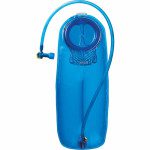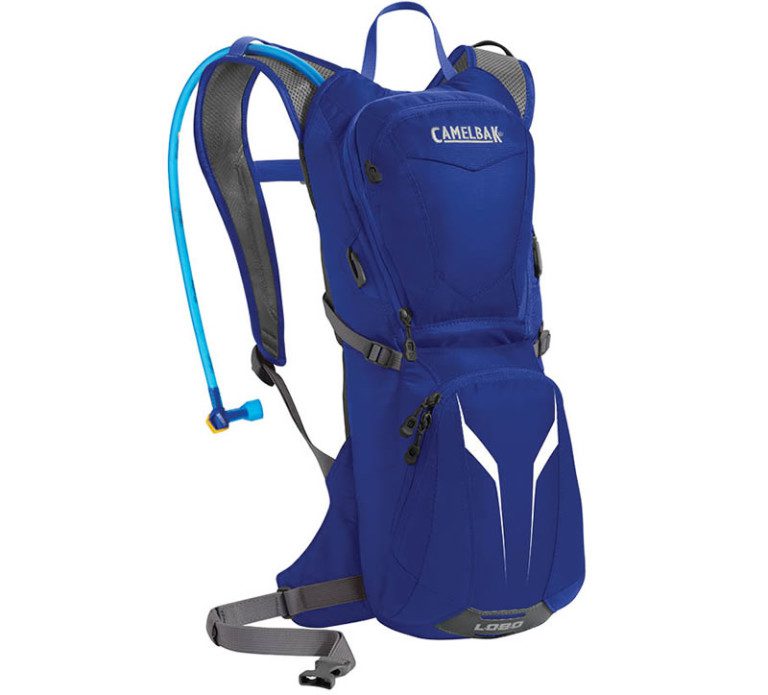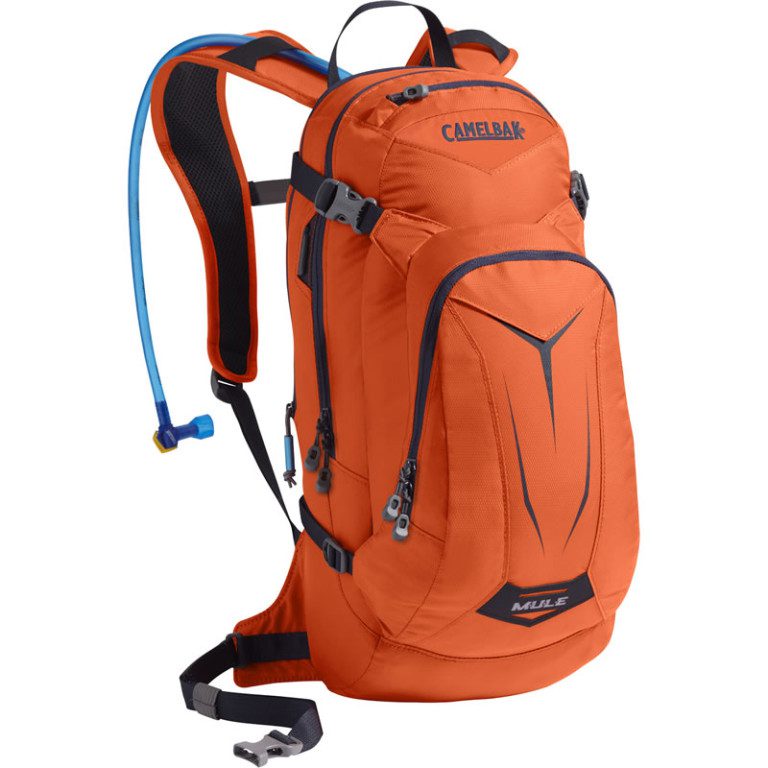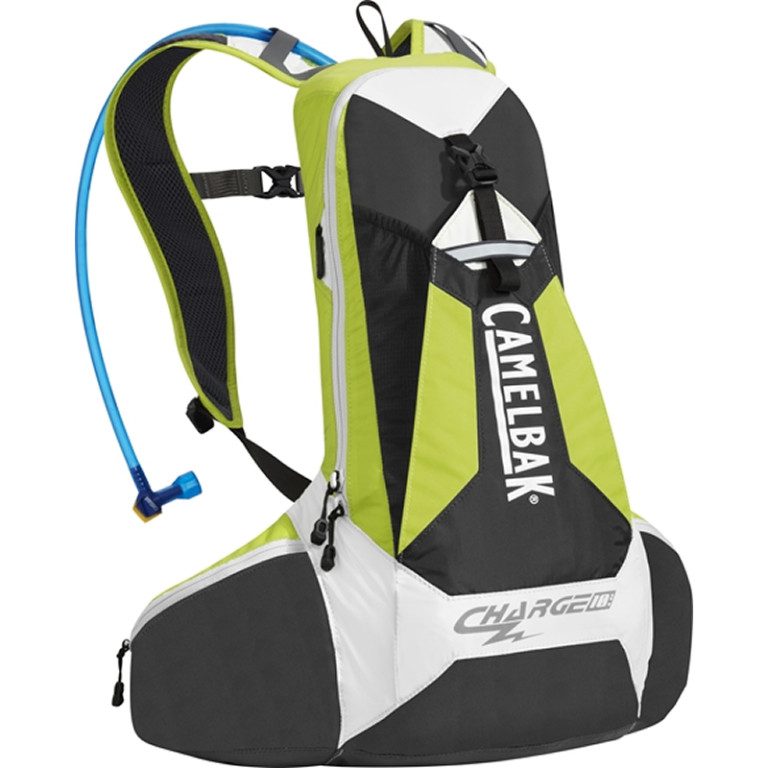Our helpful guide to the different types of hydration pack available. You’re guaranteed to learn which are suitable for you.
 A lot of cyclists have gone off using water bottles. They often don’t hold enough water for the task in hand. They also get covered in filth. And a lot of mountain bikes don’t actually have any room to put a bottle.
A lot of cyclists have gone off using water bottles. They often don’t hold enough water for the task in hand. They also get covered in filth. And a lot of mountain bikes don’t actually have any room to put a bottle.
For riding that involves having to take along a fair amount of other stuff with you in a rucksack anyway (spare clothing, tools, inner tubes etc) then having your drink handled by the backpack too makes a lot of sense.
Hydration packs are like handbags for cyclists. They contain everything we need for to go riding. Some cyclists have one hydration pack for all sorts of rides throughout the year. Other cyclists have lots of handbags – sorry, hydration packs. One for every occasion.
Now, we think it’s a good idea to have more than hydration pack but we also think that you can cover all eventualities with just two different packs.
We’ve broken down the vast array of packs available into just four types: short ride, long ride, big load and lightweight. There’s a mixed pair of these styles to suit everyone. Read on to see which pairing will cover all your particular bases.
But first, some basics
Hydration packs are essentially rucksacks with a specific place to hold a drinks bladder and drinking pipe.
Hydration packs vary in both size and in abundance of features. You can get small, minimalist packs. You can get massive, compartmentalised, feature-laden packs. The size of hydration packs is usually measured in litres of capacity.
Most hydration packs feature a larger main compartment with minimal compartmentalisation. This is used for stowing your larger items (spare clothes, pump, inner tubes etc). Then there is the smaller, secondary compartment which is often compartmentalised into different pockets and sleeves for various smaller items such as tools, puncture repair kit etc.
Some hydration packs come with bladders supplied. Others require you to purchase a bladder separately.
The bite valve on the end of the drinking pipe usually has some sort of locking/off mechanism to stop any liquid coming out when it shouldn’t do (when the bag’s lying on the ground or in the back of your car etc).
Right, on to the four different types of pack.
Short ride
 (this is an old post and the linked content no longer exists)
(this is an old post and the linked content no longer exists)
Used for quick local rides. Or sometimes in races.
Storage capacity range: 5 to 10 litres (remember, here ‘litres’ refers to litres of storage/air not litres of drink)
One or two modest sized compartments for storing essential tools and spares.
No provision for spare clothes or body armour.
Often constructed from lighter weight material.
Still holds a full-sized bladder but usually the bladder will only be half full.
Long ride
 (this is an old post and the linked content no longer exists)
(this is an old post and the linked content no longer exists)
This is your main, weekend ‘proper ride’ pack.
Storage capacity range: 10 to 15 litres. Plus a full size bladder (typically around 3 litres).
One large main compartment for stowing spare clothes etc, possibly with its own internal pocket (for eyewear, wallet, sweets or such like).
A smaller, compartmentalised front compartment for tools and spares.
External provision for carrying/stowing body armour, helmet or jacket.
Side cinch straps for snugging the pack down in size if it’s not holding a totally full load.
A small pocket on the very top of the pack for a phone.
Often the back panel of Long Ride packs is designed to channel airflow and deal with sweaty back syndrome.
Big load

These high capacity packs are ideal for both work and adventure. Commuting duties and multi-day epic rides.
They’re basically similar to the Long Ride type described above but feature a much larger main compartment.
Typically they have broader waist straps – sometimes with built-in zipped pockets.
Storage capacity: 15 to 30 litres. Plus a full size bladder.
Most have a rain cover pull-over that stows away on the underside of the pack.
Lightweight
 (this is an old post and the linked content no longer exists)
(this is an old post and the linked content no longer exists)
For racing and high-intensity activities.
Modest storage capacity: 6 to 12 litres.
Mid-size bladder (approx 2 litres).
Cutting edge lightweight fabric.
One modest main storage compartment with minimal – if any – compartmentalisation.
Minimal external stow storage.
Waist band with on-the-fly accessible pockets for food/sweets.
Designed for other activities as well as cycling (running, hiking etc).
Which hydration pack should you buy?
XC riders and racers should have a modest Long Ride type pack for their regular weekend ‘proper rides’. Combine this with a Lightweight pack for races or for shorter local rides.
Trail riders should have a durable Long Ride type pack as their main pack and a Short Ride type pack for short local rides and night rides.
Adventurers should go for a combo of a Lightweight pack and a Big Load pack. This way you have any sort of ‘challenge’ catered for, from multi-day marathons through to half-day high-energy romps.
